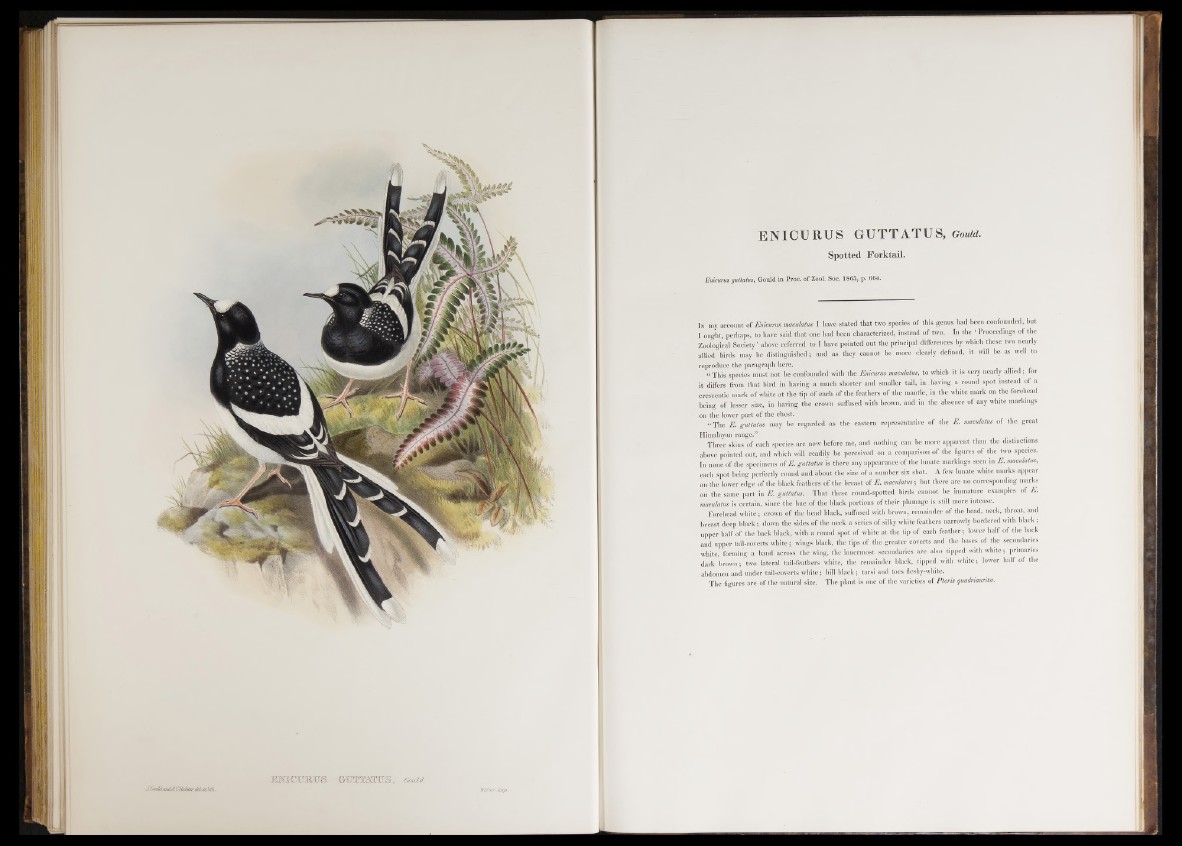
J. Goiild.antLlLCRuhUr. deLetbih.
E N i c u i t i r s G O Tm n c rs , g o m .
ENICURUS GUTTATUS, Govid.
Spotted Forktail.
Enicurus guttatus, Gould in Proc. of Zool. Soc. 1865, p. 664.
I n m y account of Enicurus maculatus I have stated that two species of this genus had been confounded, but
I ought, perhaps, to have said that one had been characterized, instead of two. In the * Proceedings of the
Zoological Society’ above referred to I have pointed out the principal differences by which these two nearly
allied birds may be distinguished; and as they cannot he more clearly defined, it will b e as well to
reproduce the paragraph here.
“ This species must not be confounded with the Enicurus maculatus, to which it is very nearly allied; for
it differs from that bird in having a much shorter and smaller tail, in having a round spot instead o f a
crescentic mark of white at the tip of each of the feathers of the mantle, in the white mark on the forehead
being of lesser size, in having the crown suffused with brown, and in the absence o f any white markings
on the lower p art of the chest.
“ The E . guttatus may be regarded as the eastern representative of the E . maculatus of the great
Himalayan range.” . .
Three skins of each species are now before me, and nothing can be more apparent than the distinctions
above pointed out, and which will readily be perceived on a comparison of the figures of the two species.
In none o f the specimens of E . guttatus is there any appearance of the lunate markings seen in E . maculatus,
each spot being perfectly round and about the size of a number six shot. A few lunate white marks appear
on the lower edge of the black feathers of the breast of E . maculatus; but there are no corresponding marks
on the same part in E . guttatus. That these round-spotted birds cannot be immature examples of E.
maculatus is certain, since the hue of the black portions o f their plumage is still more intense.
Forehead white; crown of the head black, suffused with brown, remainder of the head, neck, throat, and
breast deep black; down the sides of the neck a series of silky white feathers narrowly bordered with black;
upper half o f the back black, with a round spot of white at the tip of each feather; lower half of the back
and upper tail-coverts white; wings black, the tips of the greater coverts and the bases of the secondaries
white, forming a band across the wing, the innermost secondaries are also tipped with white; primaries
dark brown; two lateral tail-feathers white, the remainder black, tipped with white; lower half of the
abdomen and under tail-coverts white; bill black; tarsi and toes fleshy-white.
The figures are of the natural size. The plant is one of the varieties of Pleris quadriaurita.